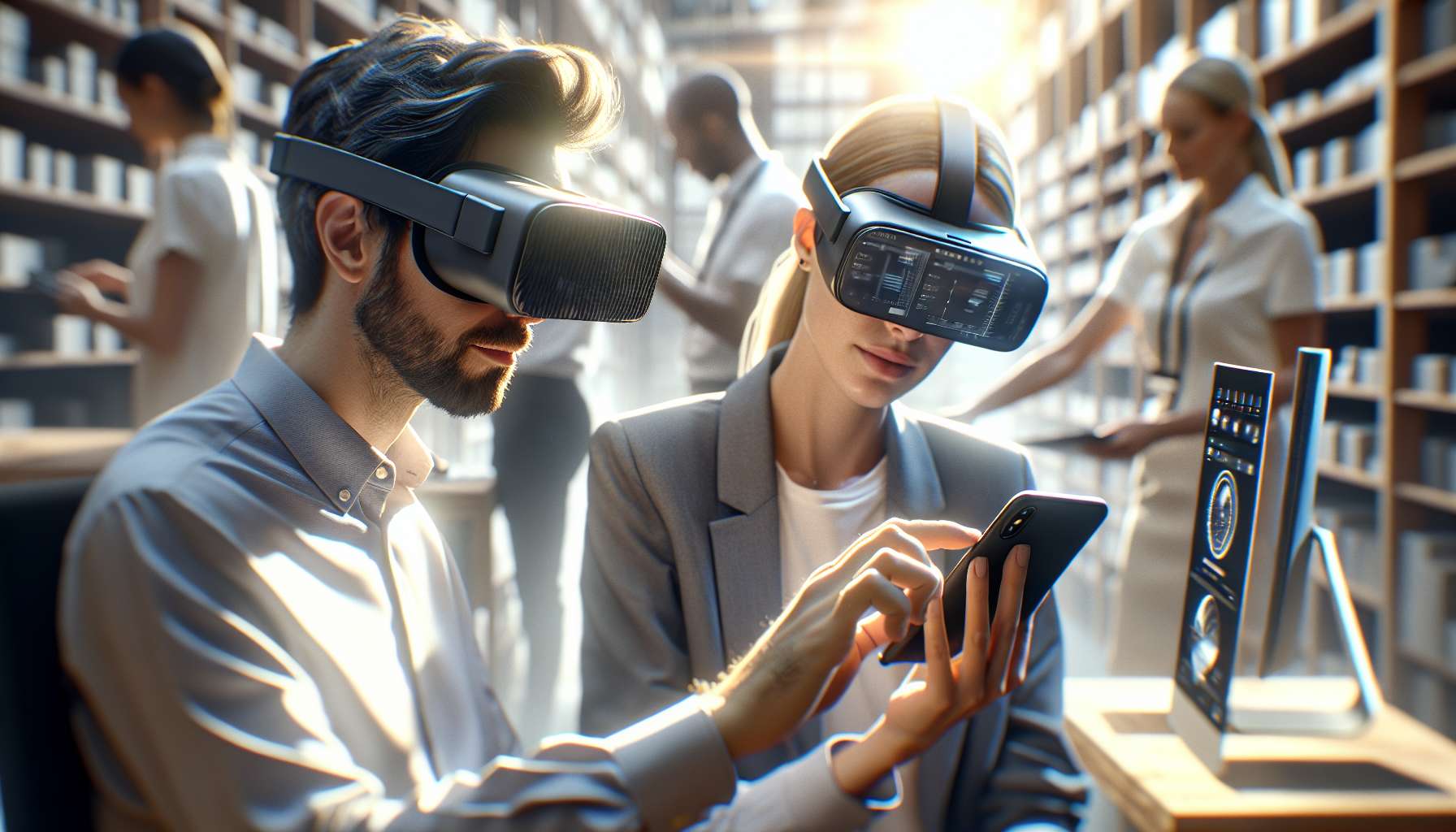The Future of Online Shopping: AR in B2B E-Commerce
Imagine a world where you can virtually try on products before making a purchase, where you can visualize how a piece of furniture will look in your office space, or where you can collaborate with colleagues in real-time, regardless of their physical location. This is the future of B2B e-commerce, and it’s being powered by augmented reality (AR).
What is AR in B2B E-Commerce?
Augmented reality is a technology that overlays digital information onto the real world, enhancing our perception and interaction with our surroundings. In the context of B2B e-commerce, AR is revolutionizing the way businesses buy and sell products online.
With AR, businesses can create virtual showrooms where customers can explore and interact with products in a realistic and immersive way. They can visualize how products will look in their own environment, making informed decisions before making a purchase. This not only enhances the customer experience but also reduces the likelihood of returns and increases customer satisfaction.
The Benefits of AR in B2B E-Commerce
Implementing AR in B2B e-commerce offers numerous benefits for both buyers and sellers. Let’s take a closer look at some of these advantages:
- Enhanced Product Visualization: AR allows buyers to see products in 3D, rotate them, and view them from different angles. This level of interactivity provides a more accurate representation of the product, leading to better-informed purchasing decisions.
- Improved Collaboration: AR enables real-time collaboration between team members, regardless of their physical location. This is particularly valuable for businesses with remote teams or global operations, as it streamlines communication and decision-making processes.
- Reduced Returns: By allowing customers to virtually try on products or visualize them in their own environment, AR reduces the likelihood of returns due to inaccurate sizing or mismatched aesthetics. This not only saves businesses time and money but also improves customer satisfaction.
- Increased Sales: AR provides a unique and engaging shopping experience, which can lead to increased sales and customer loyalty. Businesses that embrace AR in their e-commerce strategies differentiate themselves from competitors and attract tech-savvy customers.
Real-World Examples
AR in B2B e-commerce is not just a futuristic concept; it’s already being implemented by forward-thinking businesses. Here are a few examples:
- Furniture Retail: Companies like IKEA and Wayfair allow customers to visualize how furniture will look in their homes using AR. This eliminates the guesswork and uncertainty associated with online furniture shopping.
- Industrial Equipment: B2B companies in the industrial sector are using AR to showcase complex machinery and equipment. Customers can explore the inner workings of these products and understand their functionality before making a purchase.
- Automotive Industry: Car manufacturers are leveraging AR to provide virtual test drives and customization options. Customers can experience the look and feel of different car models without leaving their homes.
The Future Outlook
The future of B2B e-commerce with AR is bright. According to a report by MarketsandMarkets, the AR market in e-commerce is expected to reach $11.14 billion by 2025, growing at a compound annual growth rate (CAGR) of 46.6%.
As technology continues to advance, we can expect even more innovative applications of AR in B2B e-commerce. From virtual trade shows and product demonstrations to personalized shopping experiences tailored to individual customers, the possibilities are endless.
Conclusion
AR is redefining the landscape of B2B e-commerce, offering businesses and customers a more immersive and interactive shopping experience. By leveraging AR technology, businesses can enhance product visualization, improve collaboration, reduce returns, and increase sales.
As the future unfolds, it’s crucial for businesses to embrace AR in their e-commerce strategies to stay ahead of the competition and meet the evolving expectations of their customers. The time to explore the potential of AR in B2B e-commerce is now.





